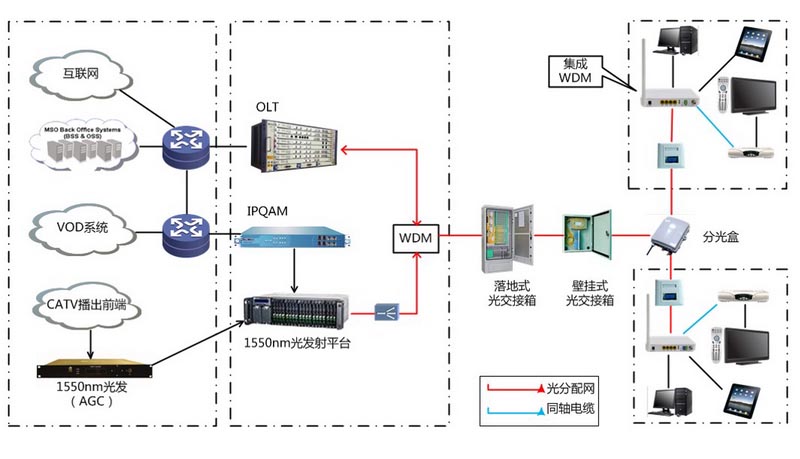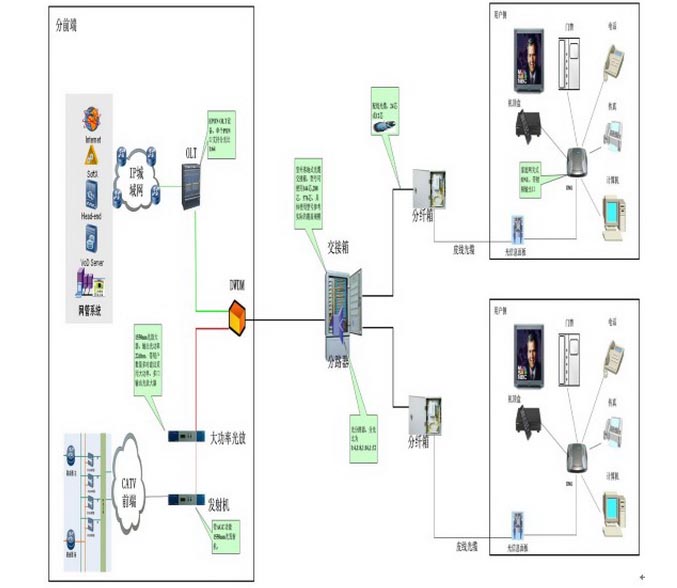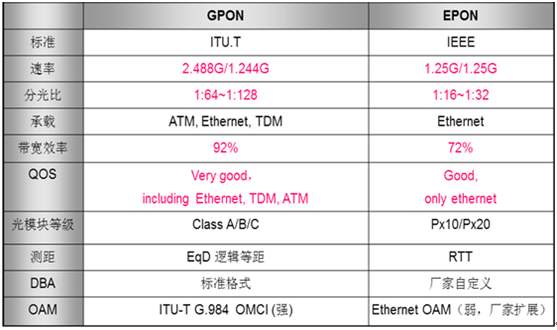FTTH solutions (Single-fiber, Three wavelengths + GPON) for CATV operators
2020/9/26 17:07:16
User bandwidth demand is the core driving force for the development of access technology, the most important means of increasing user bandwidth is to gradually move the optical node down closer to the user, optical into copper retreat, FTTH is an inevitable trend in the development of radio and television networks.
Introduction of solution
In the single-fiber three-wave home solution, the broadcast optical signals and data bidirectional signals sent by GPON devices are combined into a single optical fiber physical channel after DWDM equipment in the subfront equipment room, and then finally reach the user's home after transmission and splitting by ODN equipment at all levels.

Solution Features
Convenient terminal deployment, high degree of integration and powerful service access capability. ODN networks are easy to deploy and line deployment costs are reduced. The cost of front-end equipment and terminal equipment is high at this stage. The debugging requirements for CATV system and PON optical network system are high.

EPON vs. GPON
GPON standard unification, protocol agreement, good interoperability, faster uplink and downlink rates, with a 1:128 split ratio, greater capacity, more diverse services, high bandwidth efficiency

GPON Core Benefits
GPON service is more efficient, with 2.5 times the effective downstream bandwidth and 1.37 times the effective uplink bandwidth of EPON. GPON's splitting capacity is twice that of EPON, saving half of the backbone fiber for the same user coverage.
ODN parameters technology
In order to obtain sufficient in-home optical power for CATV optical receivers, it is recommended that CATV broadcast television systems use optical amplifiers with a higher total output power and a reduced coverage area. To ensure the stability and flexibility of the FTTH system, a sufficient optical power margin (3dBm is recommended) needs to be considered. Take the dual-fiber three-wave program, for example, a single PON port 1:64 splitter, coverage range of 8km.
Batch deployment
GPON\EPON all series of ONUs
Compact appearance, energy saving and environmental protection
Excellent CATV RF specifications, flexible AGC range
Ultra-low-access design for flexible customization of routing and bridging modes
Dual antenna wifi design, connection speed up to 300Mbps
Also supports SNMP+OAM or TR-069 management.
Terminal Management
PON products utilize the TR-069 standard protocol.
The ACS (Automatic Configuration Server) performs device management, including service configuration issuance, software management, performance monitoring and fault diagnosis, resolving CPE device management difficulties, saving maintenance costs and improving problem-solving efficiency.
At the same time, it supports SARFT standard MIB + China Telecom CTC 3.0 standard OAM for device interoperability, and complements the management functions by extending the OAM.
MPLS VPN
MPLS Multiprotocol Label Switching is one of the more widely used VPN technologies today. The traditional VPN is implemented by establishing full-connection tunnels or permanent virtual link PVC between all sites, which is not easy to maintain and expand. When adding a new site to an existing VPN, the configuration of all edge nodes accessing the VPN site needs to be modified at the same time.
BGP
MPLS VPNs are based on the peer-to-peer model, which allows service providers and users to exchange routes, with service providers forwarding data between user sites without user involvement. Compared to traditional VPNs, BGP MPLS VPNs are easier to scale and manage. When adding a site, only the configuration of the edge node that provides the site's services needs to be modified.
IGMPv3
IGMPv3 can carry multiple group record messages compared to IGMPv2, reducing the number of Report messages between devices.




